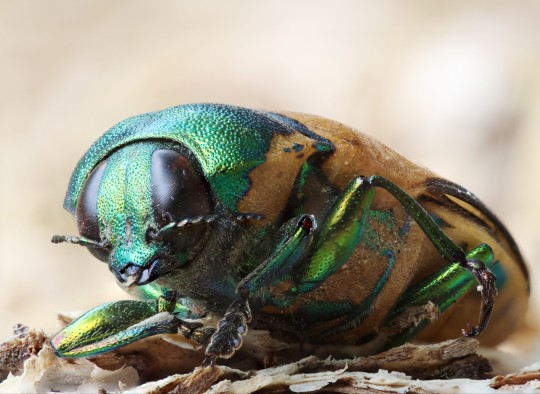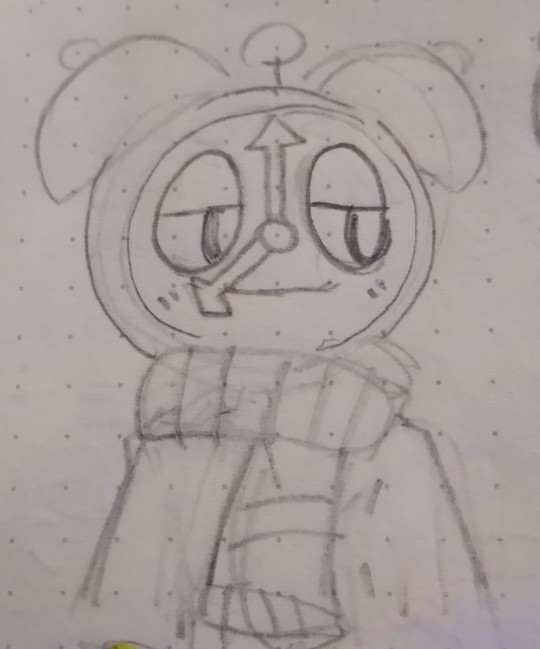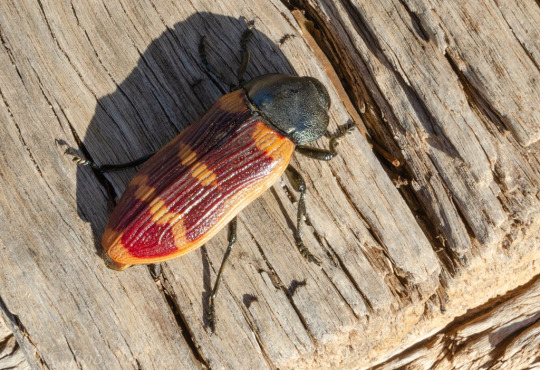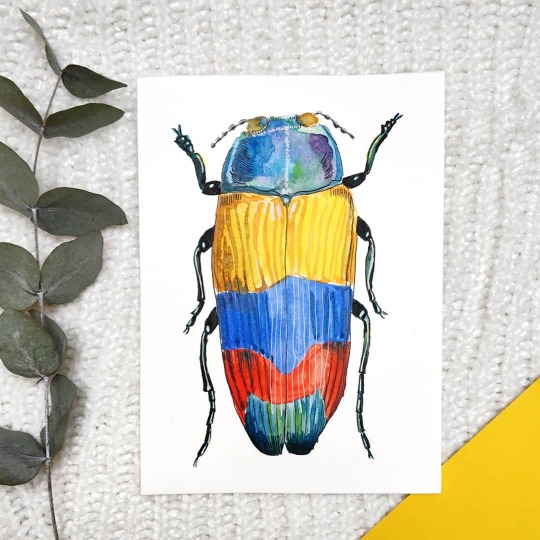#temognatha
Text

Metallic Wood-boring Beetle (Temognatha fortnumii), family Buprestidae, East Asia
photograph by Hongming Kan
592 notes
·
View notes
Text

Temognatha lessoni, a Jewel Beetle.
Sky Edwards
2024
32 image stack
Canon R7
Canon EF 100mm Macro USM
39 notes
·
View notes
Text
Fanarts i made of @temognatha 's OC
The first 4 are their oc Plushie!💕






#fanart#oc fanart#my art#trad art#traditional art#doodle#:D/#fanarts that i make for one of my icons💕
1 note
·
View note
Text
#1584 - Temognatha stevensi


Formerly T. duponti. Photo by Bob Shepherd at 'Arubiddy Station', Cocklebiddy, WA.
One of Australia’s 85 species of Temognatha jewel beetles, found in Mallee country in the SW corner of Australia, and across into part of South Australia. Apparently quite belligerent for a jewel beetle, inclined to bite if mishandled and just bulldoze through any obstacles.
8 notes
·
View notes
Text
oh boy I am memorizing Too Many Species Right Now!! Most of them are because I have bug characters
Here is all of the information I can gather directly from my mind right now:
(mentions of lots of arthropods and a cnidarian under the readmore!)
Sphecius convallis - the pacific cicada killer wasp, closely related to but not to be confused with the more well-known eastern cicada killer, in the same genus with the species name speciosus. It's a tannish-orange color with yellow and off white markings, primarily on its face and abdomen.
Parides montezuma - Montezuma's cattleheart, a black butterfly with bright red markings on the tips of its forewings and on its abdomen, grayish stripes also marking the latter.
Dynastes tityus - the eastern hercules beetle, one of the horned beetles in a dull greenish-yellow, with black freckles on the elytra, as well as a black elytral/prothoracal "margin", prothoracal horn and head. It has tan fur on the undersides of said horn, as well as thorax and abdomen. As with most (all?) horned beetles the horn is only present in males.
Apis mellifera - way too prevalent for me to forget ever, the western/european honeybee. This is the bee that is normally and widely domesticated for honey. It has a light brown head and thorax and (in workers) a yellowish and dark brown banded abdomen, and is one of the rare social species of bees. While western honeybee numbers are in fact decreasing, they aren't close to extinction and are competing with native bees, who ARE indeed endangered.
Polistes olivaceus - commonly referred to as the yellow paper wasp, yellow oriental paper wasp or Macao paper wasp. Yellow, with thin and numerous tan, brown or black bands all along its body.
Sphex pensylvanicus - the great black wasp, or great black digger wasp. It's pretty notable for being all-black with metallic, dark blue wings, and was probably first examined in Pensylvania, U.S. considering the species name but can be found in several places that are Not There in the country. I found a dead one on the side of the road and I put her in my house
Tachypompilus ferrugineus - The rusty spider wasp. It's one that preys on spiders (several? only one?), dragging it (them?) back to her nest to lay eggs on. I've already nerded out about this for a reason, because seeing a red wasp with metallic blue wings drag a wolf spider 2x her size across your front lawn into a hole of unknown depth is a memorable experience.
Polydrusus impressifrons - A weevil. It's sort of pale lime green, sparkling with yellows and darker greens in the elytra chitin, which notably to me is not smooth but rather has straight thin "valley"s carved through it from end to end? I'm sure there's a better word for it but I can't currently remember.
Pleurobrachia pileus - A jellyfish called a sea gooseberry along with the other member of its genus. ...It looks like a drop of water.
Myrmecocystus mexicanus - An ant in one of the genuses holding those known as honeypot ants, but it's not really said if the species itself is in fact one with modified honeypot workers, so I assume it probably isn't? Workers are a light golden-tan, with the head being a bit darker.
Cranjon cranjon - It's a thin light brown shrimp, that iirc is often caught for food. I just think the name is cool
Vespula maculifrons/germanica/vulgaris - three very similar-looking species of yellowjacket in the same genus, the former called the eastern yellowjacket and both the latter called european yellowjackets, though germanica is also called the german wasp while vulgaris is called the common wasp. They're basically what the average person thinks of when hearing the word wasp, with striking bands of black and yellow. They construct papery nests despite not being part of Polistes, and I can't exactly remember their differences currently? There's a tree in my area they were all swarming around about a week ago and I fed them italian ice before one was carried away and eaten mid-flight by a larger bald-faced hornet. Fun times.
I can't remember the scientific name of this one, but it is most commonly referred to as Avispa de caballo (Horse's wasp, not to be confused with horse guard wasp) and it bears close resemblance to cicada killers, due to them both being sand wasps.
Megaloblatta longipennis - one of, if not, the largest species of cockroach. I don't know why I remember this?
Lampyris noctiluca - a species of lampyrid beetle, of which is otherwise known as a firefly or lightning bug, or a glowworm for the larvae and the larviform adult females. The species is one of the most commonly seen fireflies, I believe?
Coenagrion puella - a damselfly species. The male imagos are blue, while the females are green or brown, and both have black abdominal bands and thoracic stripes. It's one of the species that folds its forelegs up near its head.
Strategus aloeus - the ox beetle. It's chestnut brown, with the males having one long forward-facing prothoracic horn and two smaller ones facing back. It doesn't have haired elytra like Pygopleurus, but the underside sure is fluffy!
And that's not even counting all the times I nerded out while writing this, like about how cockroaches are actually most related to termites and that taxon is the sister group of mantises, or how brush-footed butterflies (including monarchs!) do the same thing (as puella) with their reduced forelegs tucked up behind their head so they stand on fours, or how odonates have such large eyes and great vision that they catch their prey 90% of the time, being the most successful hunters, and can predict said prey's movement. Or counting the many nudibranchs I remember the appearances, but not the names, of in vivid detail
Anyway. Uh. Writing this felt way shorter than the time it took. Goodbye
#how do i know all these things and still have enough brain cells to remember the entirety of the hollow knight ost#long post#wAIT I FORGOT ABOUT PYRAUSTA LATICLAVIA AND SIPROETA STELENES AND COTINIS MUTABILIS AND XYLOCOPA VIRGINICA AND TEMOGNATHA ALTERNATA#not my art#bugs
5 notes
·
View notes
Photo

Temognatha conspicillata F https://ift.tt/3jzcq01
1 note
·
View note
Photo

💙 Temognatha alternata 💙 So, this is another bug for my #NereaBugs collection. #art_by_nerea #bugillustration #bug #bigs #beetleillustration #beetle #beetles #insectillustration #insectpainting #animalillustration #animalpainting #czechillustrators #czechart #czechartwork #czechillustration #ilustrace #ilustracia #slovakillustration #akvarelovapriroda #priroda #zvirata #brouk #broukvhlave #broučci (v místě Brno, Czech Republic) https://www.instagram.com/p/B6imE59BacW/?igshid=1ld90sz6fcaq
#nereabugs#art_by_nerea#bugillustration#bug#bigs#beetleillustration#beetle#beetles#insectillustration#insectpainting#animalillustration#animalpainting#czechillustrators#czechart#czechartwork#czechillustration#ilustrace#ilustracia#slovakillustration#akvarelovapriroda#priroda#zvirata#brouk#broukvhlave#broučci
0 notes
Photo

he’s a showman who does sweet tricks to distract rich people and steal from them to get money for his family. chaotic neutral/chaotic good boy.
he’s based off of a Temognatha alternata. a jewel beetle, if you will! i’m considering giving him a charm that lets him perform prestidigitation or mage hand, a limited number of times per day. would that be op? i dunno! but i love him.
5 notes
·
View notes
Text
Rare Australian Decimal Stamp Variations 2
Here are some of the decimal stamps that are hard to find – if they exist at all !
Centenary of Scouting with rare perforation
This set was issued on 19 February 2008. It consisted of 50c, $1.35 and $2 stamps. All 3 stamps were issued in sheets with both 13.9 x 13.9 and 13.9 x 14.6 perforations. The stamps with the 13.9 x 14.6 perf are quite rare. The $2 stamp was reprinted and released in 2 different minisheets on 14 March 2008 (pair) and 14 November 2008 (block of 4). These reprints were 13.9 x 14.6. Singles of the 50c and $1.35 are hard to find.
$1 Queen Elizabeth’s 90th Birthday
A special digitally-printed variation of this stamp was released on 7 November 2016 in a minisheet attached to the 90th Birthday PNC. It cost $59.95 and only a quantity of 1926 were produced!! The stamp had thicker text than the original and was cancelled with a green foiled cancellation. Another variation that was only released cancelled. No known individual mint stamps or mint minisheets exist.
50c QE2 2006 reprint with yellow wattles
This stamp was issued on 13 April 2004 commemorating the 50th Anniversary of the 1954 Royal Tour. The wattle flowers were very pale yellow – mostly white. It was reprinted in the ‘Royal Visits to Australia’ prestige booklet released on 28 Feb 2006 with bright yellow wattle flowers and thick text. (Another reprint with an image closer to the original was released in November 2016 in a se-tenant minisheet.)
Large $2 Jewel Beetle stamp with integrated tab
The reprint of the $2 Jewel Beetle (Temognatha alternata) stamp in the 2016 Multisheet was not separated from the text insert by perforations. Only 250 Multisheets were released. The text on the reprint was thin and pale compared with the original stamp that was issued on 6 September 2016. Have you seen any postally used reprints?
Stamps with Printed Perforations
The first decimal stamps with printed perforations were released in the 150th Melbourne Cup prestige booklet on 1 November 2010. They were reprints of previously issued stamps: 50c Phar Lap, 55c Peter Pan, 45c Rising Fast & 45c Might and Power. They were in pairs on pages 15, 23, 27 & 35 respectively and each stamp had a 2010 microdate. Because these stamps have to be cut-out from the page they are deemed “Collectable Stamps” by Australia Post and hence are not valid for postage. A complete list of “Collectable Stamps” is available on my free publications website: issuu.com/asvcat.
If you know of any other rare decimal stamps, please let me know.
David Mallen
Australian Stamp Variations
Melbourne
[email protected]
www.asv.net.au
Co-author of the Australian Stamp Variations Catalogue 2011-2015
Purchase from blurb.com
Rare Australian Decimal Stamp Variations 2 was originally published on Philatelic Database
0 notes
Photo

Temognatha conspicillata F https://ift.tt/3qgZa2E
0 notes